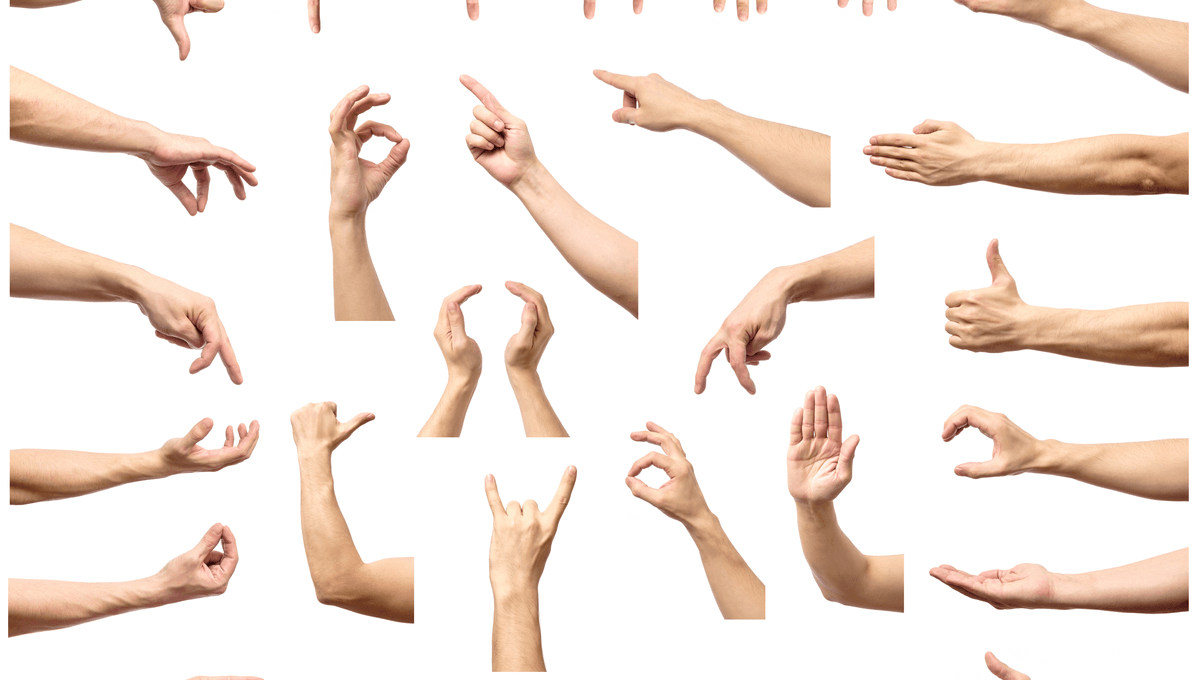
The presence of a potential universal system of nonverbal communication has been hinted at in a new study that explored the age at which children develop the differences between co-speech gestures (gestures accompanying speech) and silent gestures (gesturing without speech) that adults use.
The researchers focused on children aged between 3 and 12 years old who either spoke English or Turkish. The children were asked to use their hands to act out certain actions, like “running into a house”.
“English and Turkish were the primary comparisons because they differ in terms of the way you talk about events,” Şeyda Özçalışkan, a professor in the Psychology Department at Georgia State University, said in a statement.
“If you’re speaking Turkish, if you want to describe someone running into a house, you have to chunk it up. You say, ‘he’s running and then he enters the house,’” she said. “But if it’s in English, they’ll just say ‘he ran into the house,’ all in one compact sentence. As such, it is easier to express both running (manner of motion) and entering (path of motion) together in a single expression in English than in Turkish.”
Essentially, Özçalışkan and colleagues wanted to know whether gesture follows these differences and how early children learn these patterns during their development.
The children were asked to describe the same action two times. Firstly, when speaking (speech and co-speech gestures), and then without speaking and only using their hands (silent gesture).
The researchers found that, when children spoke and gestured at the same time, their gestures followed the conventions of their language. This meant there were clear differences between the gestures used by English and Turkish speakers – but when they used gestures alone, the children’s gestures were remarkably similar.
“It is easier to express both running and entering in a single gesture compared to speech, particularly for Turkish speakers who have to express running and entering in two separate sentences in their speech,” Özçalışkan explained. “So when you’re not speaking, gesture doesn’t have to follow the separation of manner and path, and, you can easily actually put them together.”
Interestingly, the study found that these patterns appear at an early age. Children start to use co-speech gestures with their spoken language around 3 to 4 years of age.
In a previous study, Özçalışkan and colleagues examined this phenomenon in sighted and blind adults. In this study, the participants were also divided between English and Turkish speakers. Using the same methods as in this latest study, the team found the same differences in co-speech gestures and similarities in silent gestures. This was a surprising result, especially as the non-sighted participants had been blind from birth and therefore had never seen anyone gesture before.
So far, the results of these studies have shown that many participants use gestures similar to those in “home sign systems”, which are informal sign language systems developed spontaneously by deaf children who have not yet learned conventional sign language.
“What we see in fact, is some of these sorts of basic structures that we see in, for instance, early sign languages,” Özçalışkan said.
Özçalışkan believes this indicates the potential existence of a kind of universal gesture system that enables us to communicate with one another regardless of language, sight, or hearing ability.
The next step, Özçalışkan suggests, is to study blind Turkish and English-speaking children to see if the same patterns appear there.
“We established in our earlier work that blind adults gesture like sighted adults… They showed differences in speech and co-speech gesture, but when they’re not talking, they show similarities. So, the next question is, how early do we see evidence of that?” Özçalışkan said.
The study is published in the journal Language and Cognition.
Source Link: Humans May Have A Universal, Nonverbal Form of Communication